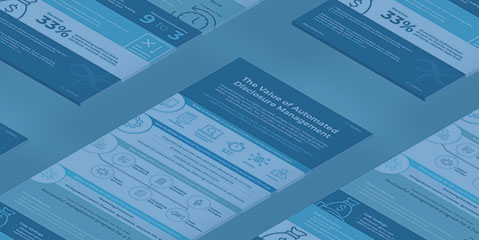The vast amount of financial service industry regulations for which banks and wealth management firms must comply cause chaos and confusion for even the most savvy marketer. Keeping current with the agencies that oversee and enforce the rules can help clarify the why, and the ways to connect and communicate for stronger compliance and fewer errors and fines.
What follows is the second article in this current series written specifically for those managing marketing, compliance, and disclosures in wealth management.
From FINRA insights to UDAAP factors, the resources and recommendations are intended to make the work you do a bit easier.
Here, then, a resources refresher on wealth management disclosures and regulatory compliance, focusing on FINRA as it relates to regulated ad content and updated UDAAP rules.
Ad Rules and Regulations: Insight into FINRA for Marketers
As Naehas is always focused on being a resourceful partner to those it serves, it seems prudent to offer a fair amount of background on how FINRA operates, especially as it relates to the work you do in meeting regulatory requirements and managing compliance.
 To protect investors and ensure the market’s integrity, FINRA — the Financial Industry Regulatory Authority was established as a government-authorized not-for-profit organization that oversees U.S. broker-dealers. FINRA is authorized by Congress to protect America’s investors by making sure the broker-dealer industry operates fairly and honestly. In doing so, it oversees more than 624,000 brokers across the country—and analyzes billions of daily market events.
To protect investors and ensure the market’s integrity, FINRA — the Financial Industry Regulatory Authority was established as a government-authorized not-for-profit organization that oversees U.S. broker-dealers. FINRA is authorized by Congress to protect America’s investors by making sure the broker-dealer industry operates fairly and honestly. In doing so, it oversees more than 624,000 brokers across the country—and analyzes billions of daily market events.
The Advertising Regulation Department reviews broker-dealers’ communications to comply with the advertising rules of FINRA, the SEC, the MSRB, and SIPC including fair, balanced, and not misleading advertising.
On December 22, 2020, the SEC announced amendments to the advertising rules under Rule 206(4) as a part of The Investment Advisor Act of 1940. The amendments are designed to modernize the existing rule and prepare the industry for future evolution.
The updates include:
- Combining the advertising and solicitation rules under one Marketing rule
- Applying a more principles based formula for adherence with the Rule
- Inclusion of private funds for compliance with the Rule
- Codifying guidance previously provided through No Action letters including past specific recommendations and third party ratings
- Expressly allowing the use of testimonials
- Hyperlinks and layered disclosures now permitted
- Emphasis on objective, testable policies and procedures
As noted by the SEC, the marketing rule, amended books and records rule, and related Form ADV amendments, will be published on the Commission’s website and in the Federal Register. All will be effective 60 days after publication in the Federal Register. The Commission has adopted a compliance date that is 18 months after the effective date to give advisers a transition period to comply with the amendments.
For additional information, please see the SECs announcement.
2022 Report on FINRA’s Examination and Risk Monitoring Program
The Communications with the Public section informs member firms’ compliance programs by providing annual insights from FINRA’s ongoing regulatory operations, including (1) relevant regulatory obligations and related considerations, (2) exam findings and effective practices, and (3) additional resources.
The organization hosts events which communicate the related regulations involved in bank marketing, and offers guidelines for those coordinating customer communication for wealth management firms.
FINRA Firm Grouping Member Forums, the last of which was held in December 2021, are one-day free events designed to provide financial professionals associated with FINRA member firms the opportunity to engage in key discussions with FINRA staff and connect with industry leaders and peers. The forums also include thoughtful discussions around the future landscape of the financial services industry and provide opportunities to meet one-on-one with FINRA Risk Monitoring Analysts, Directors, and Single Points of Accountability (SPoA) to discuss firm-specific questions.
FINRA’s Advertising Regulation Conferences, the next to be held in October 2022, offer a comprehensive agenda designed for new and experienced communications compliance professionals. Industry and regulatory speakers facilitate interactive, forward-looking discussions on current practices, policies, priorities, and rulemaking. The conference also provides the opportunity to network with industry peers and meet one-on-one with Advertising Regulation Department staff during office hours and throughout the event.
What is UDAAP?
Another critical set of compliance criteria comes under UDAAP regulations. In a recent post where we partnered with Chartwell Compliance, we offer perspective and solutions for those whose role it is to manage disclosures and compliance. The following overview identifies additional insights.
 UDAAP is the acronym referring to unfair, deceptive, or abusive acts or practices by those who offer financial products or services to consumers. UDAAPs are illegal, according to the Dodd-Frank Wall Street Reform and Consumer Protection Act of 2010. This includes Unfair or Deceptive Acts or Practices (UDAP) under Section 5 of the Federal Trade Commission Act (FTC Act) as well as Unfair, Deceptive, or Abusive Acts or Practices (UDAAP) pursuant to the Dodd-Frank Wall Street Reform and Consumer Protection Act (Dodd-Frank Act).
UDAAP is the acronym referring to unfair, deceptive, or abusive acts or practices by those who offer financial products or services to consumers. UDAAPs are illegal, according to the Dodd-Frank Wall Street Reform and Consumer Protection Act of 2010. This includes Unfair or Deceptive Acts or Practices (UDAP) under Section 5 of the Federal Trade Commission Act (FTC Act) as well as Unfair, Deceptive, or Abusive Acts or Practices (UDAAP) pursuant to the Dodd-Frank Wall Street Reform and Consumer Protection Act (Dodd-Frank Act).
On March 11, 2021, under the Biden administration, the Consumer Financial Protection Bureau (CFPB) redefined the interpretation of the “abusiveness” standard of UDAAP by rescinding the prior administration’s 2020 order that had greatly reduced the enforcement of abusive practices in conjunction with other facets of UDAAP. The document detailing the current UDAAP guidelines can be found here.
Understanding UDAAP
After the 2008 financial crisis, regulators created new laws to protect consumers and to increase consumer confidence in financial transactions. Defining and outlawing UDAAPs were among many steps in that process. The Dodd-Frank Act defines an unfair practice as one that harms consumers financially and that consumers cannot reasonably avoid. The harm does not have to involve a large amount of money.
Resources for Regulatory Compliance
For wealth management firms – and their marketing and compliance teams, in particular – meeting the myriad requirements in this highly-regulated industry is vexing. But the solutions available in the marketplace today, especially with innovative platform technology purposely-built for financial services, make it easier than ever to get “a little help here.”
Having partnered with major banks, top wealth management firms, and system integrators, Naehas brings deep industry knowledge and proven cloud platform technology to marketing teams in a way that solves the most challenging regulatory demands.
Four Core Capabilities of Automation for Martech Teams
Artificial intelligence in financial services offers marketing teams a wide range of benefits, from collaborative review tools to the concept of “digital compare.” This has been very useful in the review process for marketing teams, as noted in recent posts offering the added value of having one central place for audit history and security.
Naehas Intelligent Reviews for marketing presents these significant benefits:
- Automated Assessments: Reduce review fatigue and increase accuracy
- Collaborative Review Tools: Visualize reviews and remove communications failures
- Compares and Change Control: Eliminate corner-to-corner reviews between rounds
- Audit History and Security: Supports the credible challenge
 It may not be welcomed news that regulations are likely to increase for financial services. However, knowing more about the enforcers of those rules – and the often untapped resources they offer – can go far in helping to reduce fines and help wealth managers improve compliance and customer communication. This also makes a compelling case for finding partners and technology to help overcome those hurdles with operational efficiency.
It may not be welcomed news that regulations are likely to increase for financial services. However, knowing more about the enforcers of those rules – and the often untapped resources they offer – can go far in helping to reduce fines and help wealth managers improve compliance and customer communication. This also makes a compelling case for finding partners and technology to help overcome those hurdles with operational efficiency.
The bottom line: stay informed, stay compliant, get help, and get ahead of the competition.
FINRA:
- Robust website with resources for Investors, Marketing and Compliance
- Webinars
- Events (hybrid, Small Firm, Annual and biannual Advertising Conferences
- Compliance resources including checklists and a Peer-to-Peer Library






